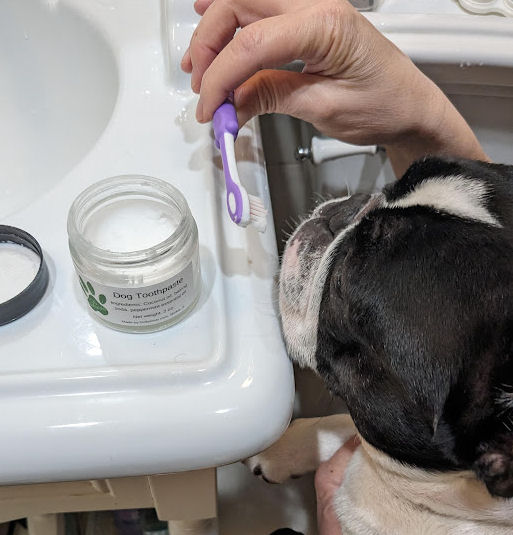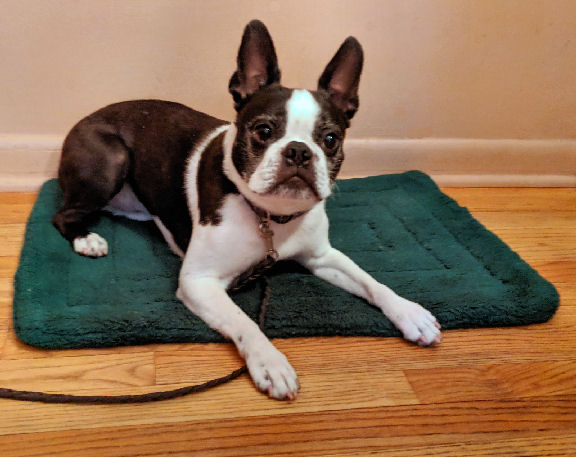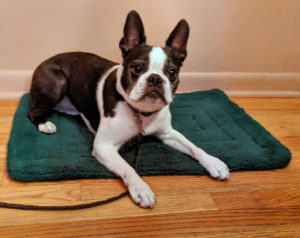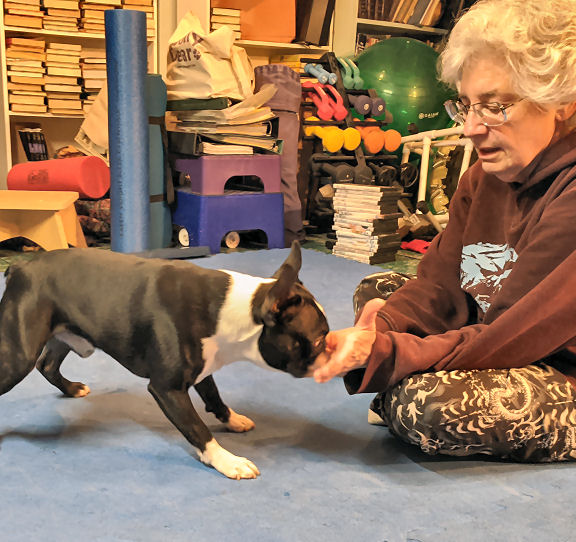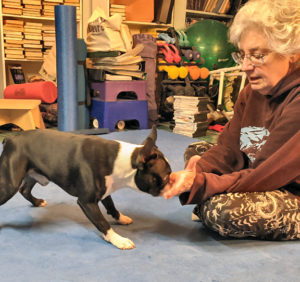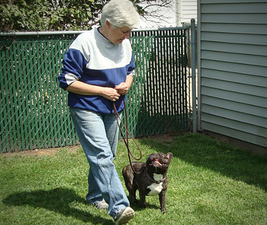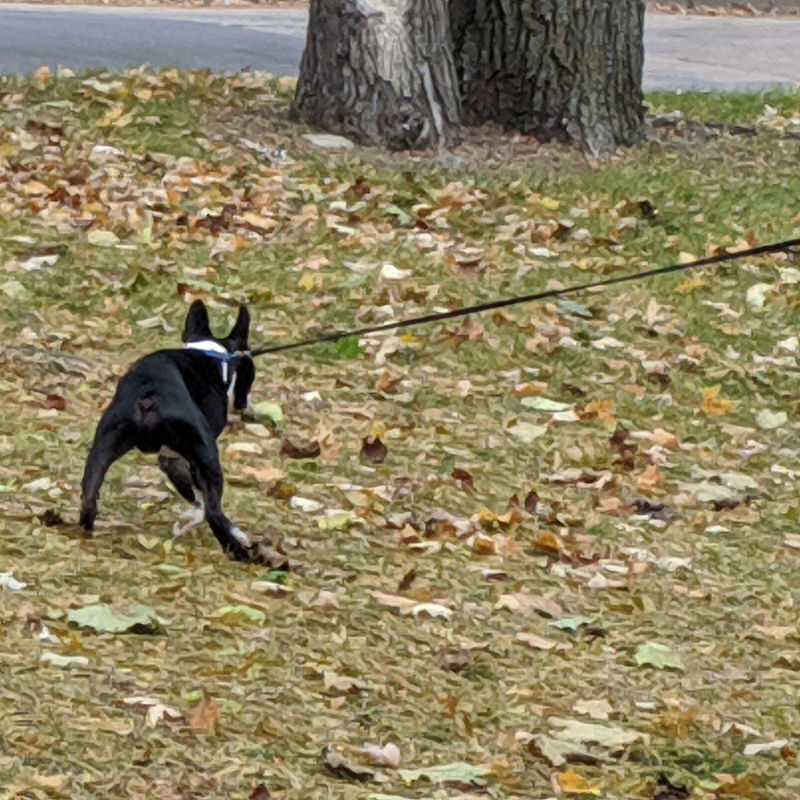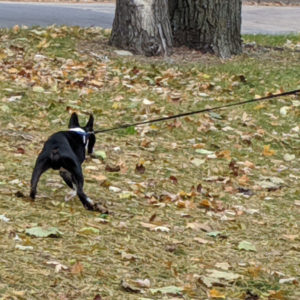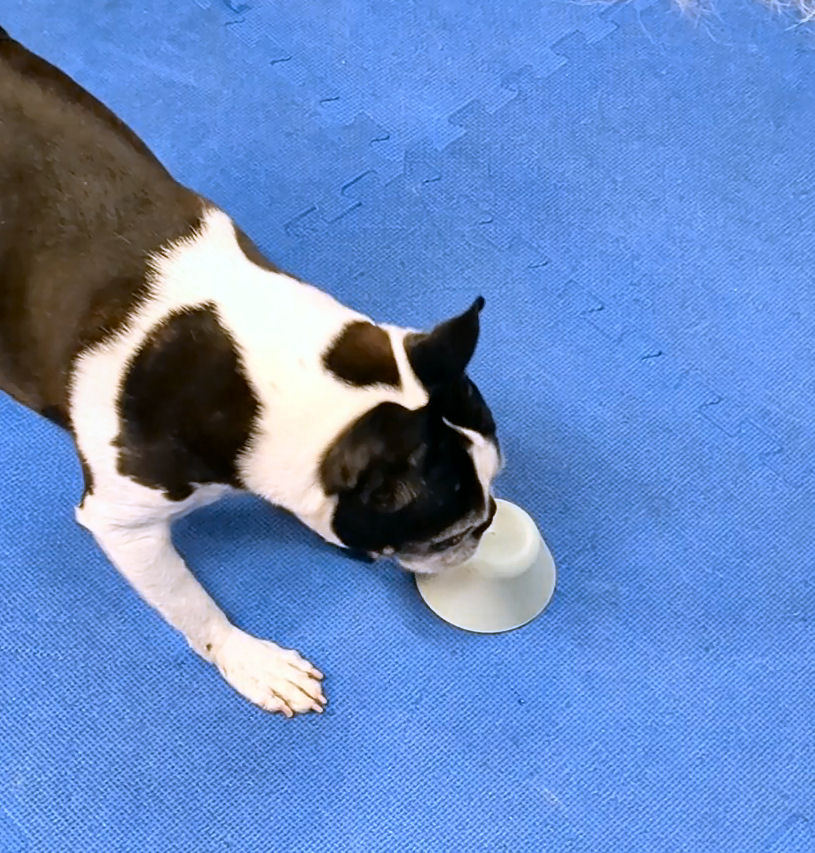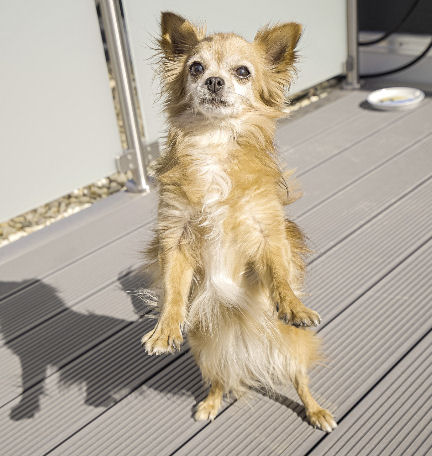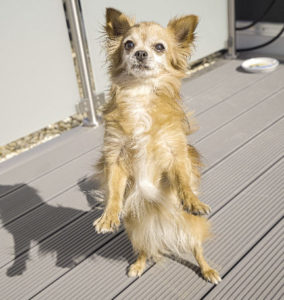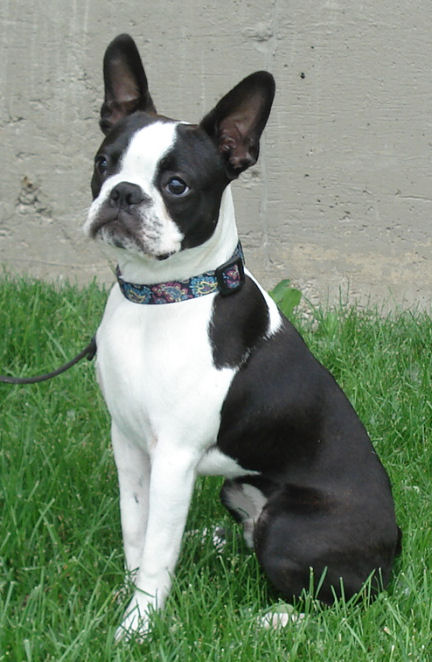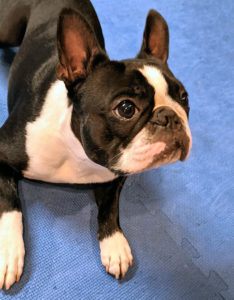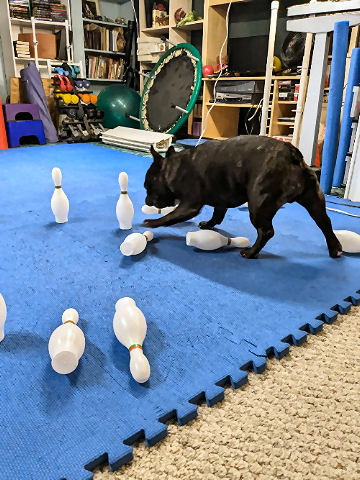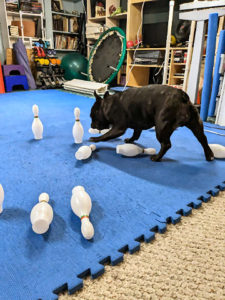It’s good sense and good dog guardianship to teach your dog care behavior procedures, like eye drops, ear cleaning, tooth brushing, even nail trimming.
If your dog is resistant to their face, ears, eyes, or mouth being handled, go slow. Since you’re preparing for the future, you don’t need to push your dog past his/her comfort level.
Prepare for some day
There will probably come a day when you have to give your dog eye drops. Especially if you have active dogs, dogs with short snouts, or who sniff, or who play/wrestle with other dogs. It’s almost inevitable, so it’s a good idea to train it before you need it.
Routine dog care chores will also be easier if your dog understands what’s going to happen. And knows what’s expected of them.
Since you and your dog already know how to play training games, breaking down dog care behaviors should be relatively easy.
Ready for eye drops
If you are the only person caring for your dog, you know it can be challenging to give any kind of medicine or drops. Getting your dog to cooperate can be difficult, as well as frustrating.
Most important: Never lie to your dog. If you try to disguise, or fake what you’re doing, you break your dog’s trust. Their part is cooperating. Yours is doing what you’ve said you would. Stick to it.
Don’t try to hide the medicine, toothbrush, cotton swab, gauze, whatever. If your dog wants to sniff the stuff, let them. Keep a firm grip so they can’t steal and eat anything, but show them it’s all benign stuff.
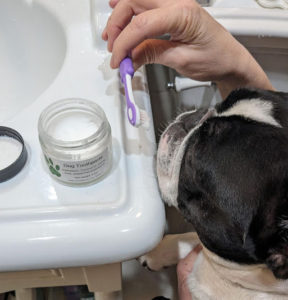
Simon is our wariest and most curious dog. Nothing happens to him unless he checks it out first. You’d think, after five years, that he knows what’s happening when we load a brush with toothpaste and turn to him. He still has to sniff and okay it. Every single time.
That’s okay. By asking him to help in his own care, he gets to choose. Every single time.
Teach the chin rest
The first thing to teach your dog is a chin rest. If your dog already knows “Gimme Your Face,” you’re most of the way there. For eye drops, you’re probably going to need two hands, so your dog should know a chin rest on a towel, mat, or even a small pillow.
Have a bunch of treats in a bowl nearby. If you have a small dog, sit on the floor. Put the towel across your lap and hold a treat in one hand on the towel. When your dog comes over to take the treat, keep feeding as long as their head is over the towel. If they back off, stop feeding. When they come back, keep feeding. Establish the pattern so they’re always rewarded when their head is over the towel.
Moving on
When your dog starts understanding this step, after a couple of treats use your dog’s release word and toss a treat to the side. If they come right back after getting the treat, you know it’s time to move on.
The next step is to wait for your dog to rest his/her chin on the towel. Hold the treat as far down as possible, and as close to you as possible. Feed as long as your dog’s chin is on the towel. As soon as their head comes up at all, stop. When the chin contacts the towel, feed. When it comes off, stop.
Since you will need some duration for care procedures, be sure to practice varying lengths of time that your dog stays with their chin on the towel. And be sure to release him/her before they’re tempted to do it themselves.
Next step
When your dog is staying with chin on towel for a good while, at least five seconds, add touching your dog to the game. At first, just touch them lightly, around the eyes, nose, mouth, and ears. Again, build up the amount of time, and use your dog’s release word.
The next step is to actually mimic the action of putting drops in your dog’s eyes. Holding the upper eyelid briefly, then letting it go. Both eyes.
If you have an eye dropper, introduce it to your dog and let him/her sniff it. Hold it in one hand while touching the eye lid with the other.
If your dog is comfortable this far, you can go ahead and fill the dropper with sterile saline solution and put a drop in each eye.
Go slow
If your dog is resistant at any step, just go back one or two and build back up. If there’s no urgent need, take the time your dog needs to be comfortable.
It’s probably going to take a lot of treats. Remember you can always use your dog’s food for part of the “trail mix” of treats you use in training.
This kind of dog training is called “cooperative care.” It’s certainly easiest, once learned, to have your dog help take care of themselves.

